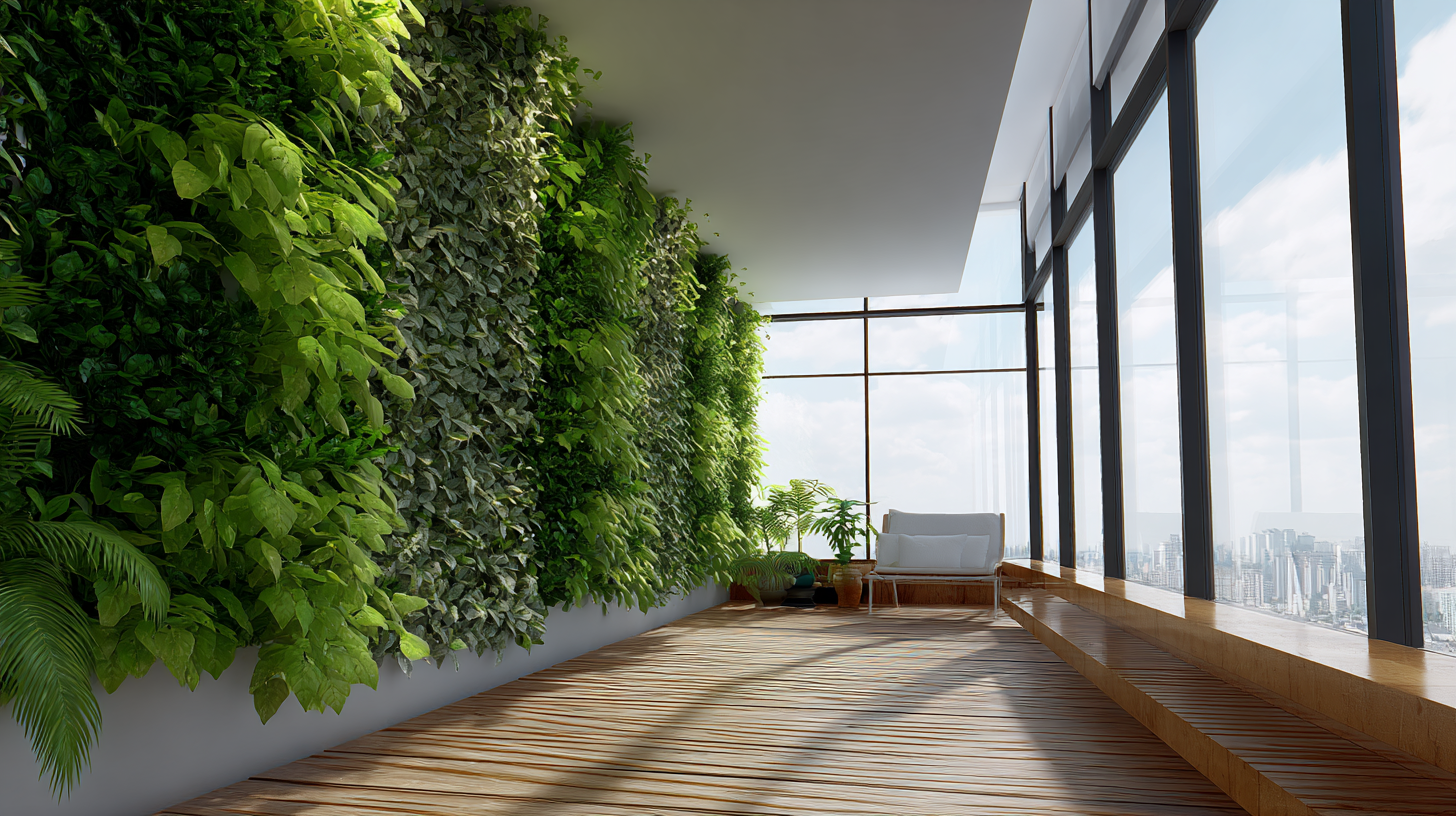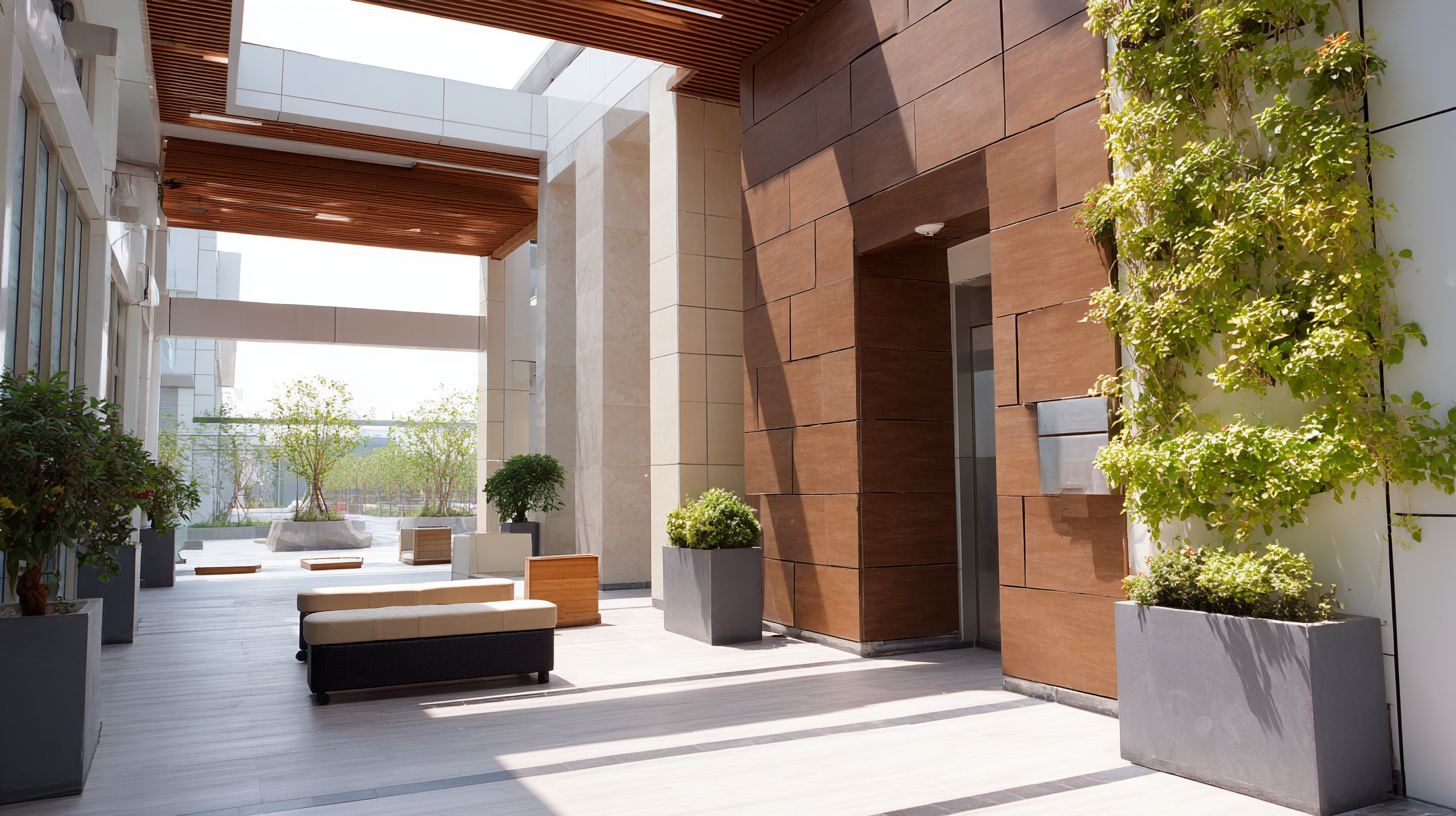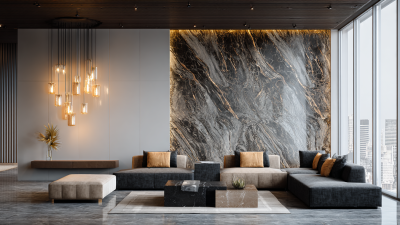
- Ginazhao@wanglumaterial.com
- Mon - Sat at 7:00AM to 9:00PM



In the quest for sustainable building solutions, maximizing energy efficiency is paramount, and WPC wall panels offer a compelling solution to this challenge. According to the U.S. Department of Energy, buildings account for nearly 40% of total energy consumption, highlighting the urgent need for innovative materials that enhance efficiency. WPC wall panels, composed of wood fibers and plastic, not only reduce the demand on natural resources but also exhibit superior insulation properties. Research indicates that using energy-efficient materials can lead to reduced energy costs by up to 30%, making the integration of WPC wall panels a strategic investment for both residential and commercial properties. By leveraging their versatility and eco-friendliness, architects and builders can contribute to a more sustainable future while maintaining high performance standards in energy consumption.

WPC wall panels offer significant benefits for energy efficiency in sustainable building solutions. These advanced materials, composed of wood and plastic composites, are engineered to enhance structural performance while effectively minimizing energy consumption. The thermal insulation properties of WPC panels help maintain stable indoor temperatures, reducing the reliance on heating and cooling systems. This can lead to substantial energy savings and lower utility bills over time, making them an attractive option for eco-conscious builders.
In addition to their insulating capabilities, WPC wall panels can also contribute to a reduction in the carbon footprint of a building project. Their durability and resistance to environmental degradation mean that they have a longer lifespan than traditional materials, which often require more frequent replacement. By incorporating WPC panels into construction, builders not only increase energy efficiency but also promote sustainability through reduced material waste and lower energy demand over the life of the building. Thus, WPC wall panels represent a smart choice for those looking to maximize energy efficiency in modern architecture.
| Benefit | Description | Energy Efficiency Impact |
|---|---|---|
| Thermal Insulation | WPC wall panels provide excellent thermal insulation, reducing the need for heating and cooling. | 15-30% energy savings |
| Sustainability | Made from recycled wood and plastic, WPC panels support sustainable building practices. | Reduces carbon footprint |
| Moisture Resistance | Resistant to moisture, mold, and pests, leading to lower maintenance costs. | Decreases energy loss from heating |
| Durability | Long-lasting panels reduce the frequency of replacements, thus saving resources. | Less energy used in production and disposal |
| Aesthetic Options | Available in various designs, enhancing building aesthetics without sacrificing efficiency. | Encourages eco-friendly building choices |
When selecting WPC (wood-plastic composite) wall panels for maximum insulation, it’s essential to consider the specific properties of the materials involved. The thermal conductivity of WPC panels can significantly influence energy efficiency in buildings. Look for panels with lower thermal conductivity ratings, as these will provide better insulation and help maintain consistent indoor temperatures. Additionally, the thickness and density of the panels play a crucial role in their insulating capabilities; thicker panels typically offer superior performance.
Another important factor is the design and finish of the WPC wall panels. Textured surfaces can enhance insulation by creating air pockets that reduce heat transfer. Ensure that the panels you choose also meet relevant sustainability standards, as this can contribute to a building’s overall energy efficiency. Furthermore, opting for panels with a warranty can offer peace of mind regarding their longevity and insulation performance. By carefully selecting the right WPC wall panels, builders can achieve an optimal balance between aesthetic appeal and energy conservation.
When it comes to maximizing energy efficiency with WPC (Wood Plastic Composite) wall panels, proper installation techniques play a crucial role in enhancing their overall performance. To achieve optimal thermal insulation, it is essential to ensure that WPC panels are installed with tight seams to minimize air leakage. Utilizing a vapor barrier during installation can also significantly reduce moisture penetration, which is a common issue that can compromise energy efficiency and lead to mold growth.
Another key aspect of installation is the orientation and placement of the panels. For instance, positioning panels in alignment with prevailing winds can help to reduce heat loss in colder climates. Additionally, incorporating reflective coatings on the panels can further enhance energy performance by reflecting sunlight away from the building, reducing cooling energy consumption. Employing these thoughtful installation techniques not only maximizes the energy efficiency of WPC wall panels but also contributes to broader sustainable building solutions.
Maintaining the energy efficiency of WPC (Wood Plastic Composite) wall panels is essential for sustainable building solutions. Regular maintenance not only extends the lifespan of these panels but also ensures they perform optimally in terms of insulation and energy conservation. According to a report by the U.S. Department of Energy, properly maintained building materials can reduce energy usage by as much as 30%. This statistic underscores the critical nature of upkeep in contributing to overall energy efficiency.
To preserve the energy efficiency of WPC walls, routine inspections for signs of wear are necessary. This includes checking for moisture accumulation, which can lead to mold and degradation of materials. It’s recommended to clean the surfaces with mild detergent and water, ensuring that dirt does not compromise the panels' insulating properties. Additionally, resealing the panels every few years can help maintain their protective barrier against environmental elements. Studies indicate that maintaining a sound exterior can improve insulation effectiveness by up to 20%, making it a worthwhile investment for sustainable construction.

Wood-plastic composite (WPC) wall panels offer a compelling alternative to traditional building materials such as wood, brick, and concrete, particularly when it comes to sustainability. Unlike conventional wood, which often contributes to deforestation, WPC panels utilize recycled wood fibers and thermoplastics, creating a product that is both environmentally friendly and durable. Additionally, their manufacturing process generates less carbon emissions compared to the production of traditional materials, making them a better option for eco-conscious builders.

Moreover, WPC wall panels are designed to enhance energy efficiency. Their insulating properties help regulate indoor temperatures, reducing the need for heating and cooling systems. This leads to lower energy consumption over the lifespan of a building. Traditional materials, while sometimes effective, often fall short in energy performance and require additional treatments to achieve similar efficiency. By choosing WPC, builders not only contribute to sustainable practices but also provide long-term savings on energy costs for homeowners, making it a wise investment for modern construction projects.





